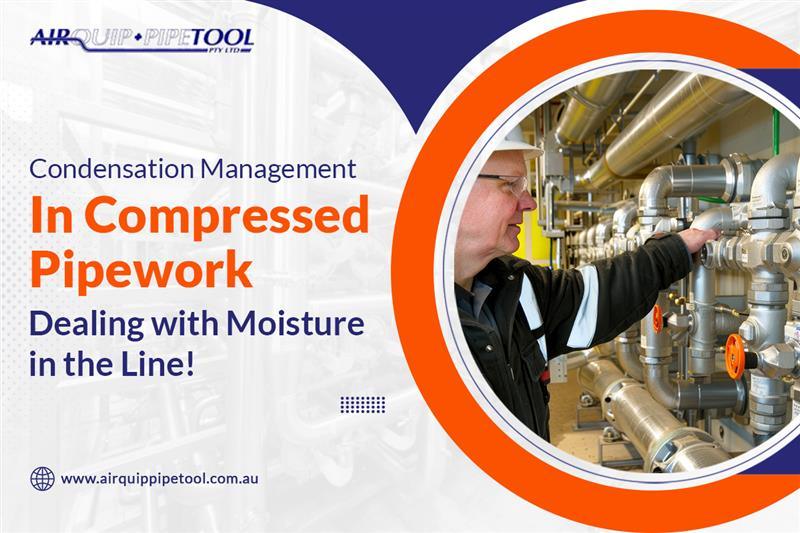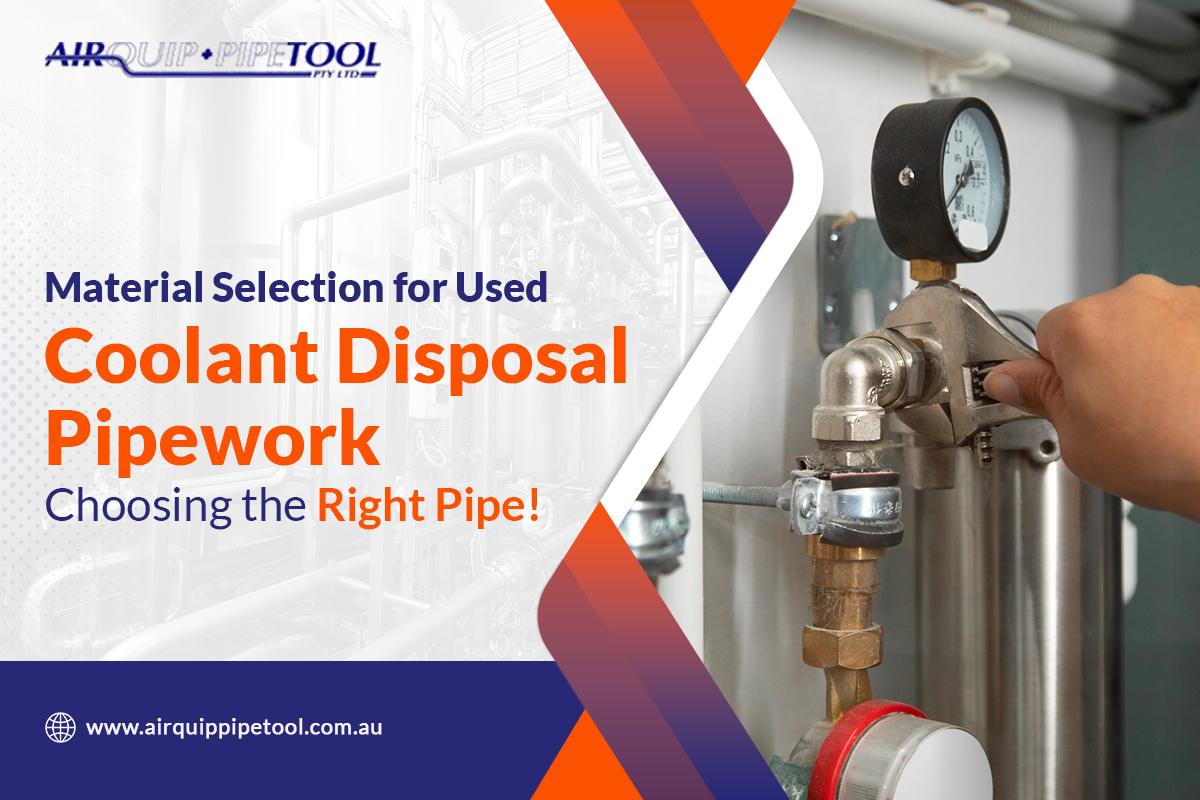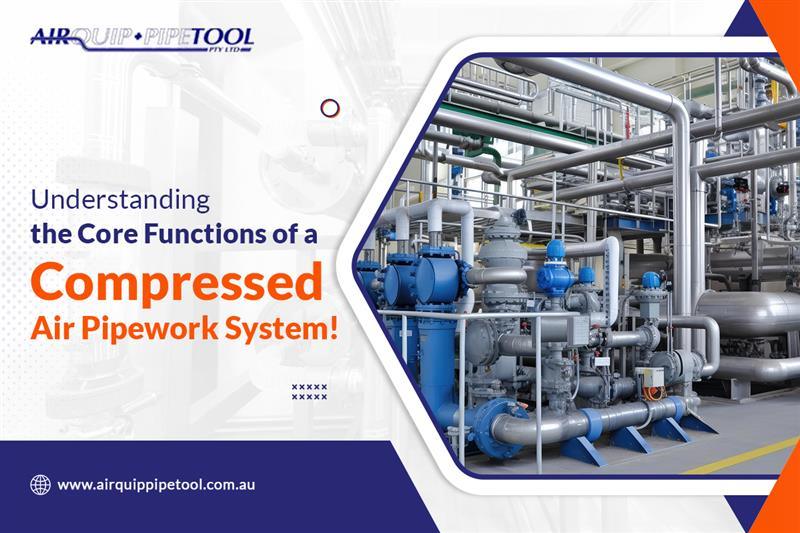- by airquippipetool
- . 19 Nov 2025
Pressure Drop In Compressed Air Reticulation Systems: Causes, Consequences & How to Minimise It?
The compressor overheating is one of the severe issues that causes sudden failures and severe risks. But what exactly causes the compressor to overheat?
External circumstances, internal reasons, or occasionally both can cause an overheated air compressor. The mechanisms involved cause the air to get heated at specific points in the system cycle, but it quickly cools before concluding. However, there is a problem with the equipment if the air gets too hot for the compressor to handle.
For instance, during the approximately 150 mm of travel between the discharge port and discharge line in a reciprocating air compressor, the air temperature will decrease by anywhere between 10 and 23.8889 degrees Celsius. The refrigerant oil and related systems will suffer if the temperature at the discharge port rises beyond 148.889 degrees Celsius.
The temperature at the discharge line should never be more than 107.222 degrees Celsius for the air compressor’s health. The discharge port would be dangerously above 148.889 degrees Celsius if the discharge line were hotter. The heat might cause an impending system failure if the discharge port temperature rises over 176.667 degrees Celsius.
Then, how to prevent the compressor from overheating? To find out how to cool down an overheated compressor, read the following sections on troubleshooting techniques given by the leading pipework installation contractors– Airquip & Pipetool Pty Ltd.
The interior and external ventilation should be the priority when trying to fix a heating problem with an air compressor. Make sure each vent is adequate for the machine’s needs by having it examined. If not, the vents will need to be changed. For the size of your system and the current activities, ask your maintenance person what the appropriate ventilation dimensions are.
Additionally, take into account the machine’s external elements. Make room for the machine in a more appropriate location if it is currently in an area that is either excessively hot or poorly ventilated. Make sure that each vent has enough space to breathe in this new location.
Keep an eye on your compressor’s oil and lubricant levels frequently, since lubrication serves as a coolant. Proper lubrication minimizes heat generation by lowering friction between moving components. Hence, replenish the oil by the planned service visits and choose the appropriate compressor oil for your application.
If your compressor has the water cooling technology built in, then you have to ensure that the water flow and temperature are accurate. Necessarily, make adjustments to the compressor’s water flow and temperature if it is water-cooled. By doing this, you can make sure the compressed air pipework is cold enough for summer.
Examine the ventilation and ducting often, even after you have adjusted the arrangement of your workstation to adequately ventilate through the compressed air pipework and the ambient temperatures. Clean the vents appropriately if there is a buildup of dust or debris along them. Verify that there are no punctures or crimped areas in the system and that the ducting flows correctly.
The vents may still have problems if they don’t get the care they need, even if you practically didn’t see any need to move the machine. Regardless of the machine’s location, an air compressor that is unable to exhaust correctly may experience heating problems.
The temperature and environment the compressor operates are the most frequent causes of overheating compressors. In the middle of summer, is your air compressor close to windows? Is there additional hot equipment nearby? Is it in a very tiny, uninsulated room? To keep the temperature of the surrounding environment lower, all of these problems may be avoided. Avoid placing your compressed air pipework near windows, particularly in hotter areas, and keep it away from other pieces of equipment that might get extremely hot.
If you are looking for updated parts for your air compressor, then it is better to choose our pipework installation contractors. We give you large stocks of compressed air pipe systems. We have various materials from 4mm nylon push fit to 160mm aluminum, with a large range of hoses, filters, and couplings. Because of this, we can supply all your needs from your compressor to the point of use, with approved and compliant products.
Compressor overheating can stem from various factors, including inadequate ventilation, insufficient lubrication, malfunctioning cooling systems, obstructed ducting, and unfavorable ambient temperatures. Addressing these issues promptly is essential to prevent system failures and ensure efficient operation. Airquip & Pipetool Pty Ltd provides expert pipework installation contractors and solutions, and high-quality components to help you maintain your air compressor system effectively.
 " alt="">
" alt="">Pressure Drop In Compressed Air Reticulation Systems: Causes, Consequences & How to Minimise It?
 " alt="">
" alt="">Material Selection for Used Coolant Disposal Pipework: Choosing the Right Pipe!
 " alt="">
" alt="">Understanding the Core Functions of a Compressed Air Pipework System!

An efficient industrial air network is about ensuring steady pressure, minimal energy loss and reliable performance from the first compressor discharge to the tool on the line. With well-designed compressed […]

The materials used in coolant disposal pipework are the main factor. So, industries need to understand what material- HDPE, Aluminium, or Stainless Steel (316L) works best for their conditions. Airquip […]

The main gases in compressed air are nitrogen (78%) and oxygen (21%). Compressed air molecules are small and possess kinetic energy, enabling them to travel at a higher speed. Also, […]
Copyright © 2025 airquippipetool | All rights reserved